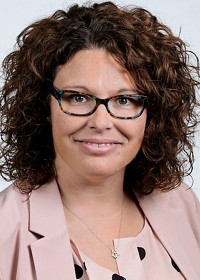Advertisement
Grab your lab coat. Let's get started
Welcome!
Welcome!
Create an account below to get 6 C&EN articles per month, receive newsletters and more - all free.
It seems this is your first time logging in online. Please enter the following information to continue.
As an ACS member you automatically get access to this site. All we need is few more details to create your reading experience.
Not you? Sign in with a different account.
Not you? Sign in with a different account.
ERROR 1
ERROR 1
ERROR 2
ERROR 2
ERROR 2
ERROR 2
ERROR 2
Password and Confirm password must match.
If you have an ACS member number, please enter it here so we can link this account to your membership. (optional)
ERROR 2
ACS values your privacy. By submitting your information, you are gaining access to C&EN and subscribing to our weekly newsletter. We use the information you provide to make your reading experience better, and we will never sell your data to third party members.
ACS News
Inclusive language around socioeconomic status and age
Taking the time for thoughtful word choice can help more people feel seen and welcomed
by Racquel Jemison, ACS staff
October 23, 2023
| A version of this story appeared in
Volume 101, Issue 35

One of the American Chemical Society’s oldest philanthropic programs was established in 1968: Project SEED. The program matches ACS volunteers with high school students for a paid summer research experience in academic, government, industry, or national laboratories. Eligible students come from households with incomes that are up to 200% of the US federal poverty guidelines; additional consideration is given for personal financial circumstances. Hundreds of students across the US participate in the program each summer, and many rising seniors apply for college scholarships through Project SEED. While managing these programs, I became attuned to the student experience, specifically the language used to describe socioeconomic status or age when advertising or describing the program.
It stung when I heard or saw words like “impoverished,” “poor,” or “struggling” used to describe Project SEED students. While I’m sure the communicators meant well, the use of those and similar words can reduce students solely to their current financial state, when there are so many additional identities that could be shared first.
Leading with someone’s strengths and aspirations instead of their deficits is called asset framing, a strategy developed and popularized by social entrepreneur Trabian Shorters. The intent isn’t to ignore or downplay problems as real as financial insecurity but to use a person’s positive characteristics—rather than their challenges—as a way of introducing them.
Asset framing is one of several recommendations included in the “Socioeconomic status” section of the ACS Inclusivity Style Guide. Additional topics covered in this section include racially coded terms, occupation, and housing status.
The typical academic lab that a Project SEED student joins for the summer has a broad range of age groups represented, including high school students, undergraduate students, graduate students, postdoctoral fellows, technicians, and the professor leading the lab. Working respectfully and collaboratively across the varying age groups is key to a successful research experience.
That respect can often start with the words we use to describe age. Words can perpetuate stereotypes or heighten divisions instead of similarities between people. For example, the generational terms “millennial” and “baby boomer” may overemphasize differences between generations. A study by IBM found no meaningful difference between generations in a number of work-related areas, including career expectations and goals and factors that would contribute to workers leaving their roles.
Generational terms are one of the topics included in the ACS Inclusivity Style Guide’s section on age. Other topics include ageist language, clarity and accuracy about dementia, and language for benefits associated with age.
Inclusive communication can expand your reach by making more people in your audience feel seen and respected. To be fair, no group of people is a monolith. For every person that might find offense in being called “disadvantaged” or “elderly,” there may be someone else that is unaffected by those descriptions or that uses those terms proudly to describe themselves. A recommendation that comes up repeatedly throughout the Inclusivity Style Guide is to ask a person how they want to be described and respect that language. If you can’t ask an individual, look for guidelines by organizations that represent groups of people. When writing about or speaking to a general audience, consider how a slight adjustment in word choice and attitude could potentially create a more inclusive culture—wouldn’t that be worth the effort?
Some of the more evergreen recommendations for age and socioeconomic status are summarized in tip sheets that can be found in this issue of C&EN and in the “Related resources” section of the ACS Inclusivity Style Guide website at www.acs.org/inclusivityguide. While the Inclusivity Style Guide evolves to keep up with changes in language and so is best accessed online, we encourage readers to print the tip sheets. This is part five of a six-part series in C&EN on the tip sheets. We hope you check out all six parts of this series on the ACS Inclusivity Style Guide and share your thoughts and feedback by emailing ISG@acs.org.
MORE ONLINE
Like what you’ve read? See the full guide and the most up-to-date tip sheets from the American Chemical Society at www.acs.org/inclusivityguide.
Socioeconomic status
For more context, review the “Socioeconomic status” section of the Inclusivity Style Guide. Use this tip sheet in combination with the “General guidelines” tip sheet.
Avoid deficit-based language
Avoid dehumanizing language that leads with deficits. Use language that looks at root causes and describes the barriers that impede those seeking opportunity.
Example
✓ Use: Consider donating to help students from lower socioeconomic groups participate in science research.
⦻ Avoid: Consider donating to ensure these impoverished students receive the help they desperately need.
Show variety within socioeconomic status groups
Avoid language that treats socioeconomic status groups as homogeneous or that treats higher socioeconomic status groups as the norm.
Example
✓ Use: Buying a car is a privilege enjoyed by some teens in the US.
⦻ Avoid: Buying a car is an important coming-of-age ritual for every teen.
How to refer to occupation
Avoid representing some types of employment as being inherently better than others, and avoid describing jobs or workers as “unskilled” or “low skill.” Use specific descriptions instead of “blue collar” and “white collar.”
Avoid outdated and generalizing terms for countries
Avoid using broad, vague terms that signal entire parts of the globe as “other,” such as “developed” and “developing” nations and “first world” and “third world” countries. When discussing groups of countries, identify them by name or specific geographic regions.
Example
✓ Use: low-income countries in East Asia
⦻ Avoid: the Global South
Age
For more context, review the “Age” section of the Inclusivity Style Guide. Use this tip sheet in combination with the “General guidelines” tip sheet.
Avoid stigmatizing terms
Generally use “older people” or “older adults” instead of “senior citizens” or “the elderly.”
Avoid framing aging as negative
Avoid implying that being young is better than being old.
Example
✓ Use: 70 years old
⦻ Avoid: 70 years young
Recognize diversity within generations
Avoid generational terms, which imply that people of a certain generation are homogeneous.
Example
✓ Use: people born between 1946 and 1964
⦻ Avoid: baby boomers
ACS Inclusivity Style Guide Tip Sheets
- Part 1: “General guidelines” and “Narratives, framing, and sentence structure”
- Part 2: “Forms” and “Race, ethnicity, and nationality”
- Part 3: “Images” and “Data visualization”
- Part 4: “Accessibility” and “Disabilities, disorders, and other health conditions”
- Part 5: “Socioeconomic status” and “Age”
- Part 6: “Gender and sexuality” and “Body size”






Join the conversation
Contact the reporter
Submit a Letter to the Editor for publication
Engage with us on Twitter